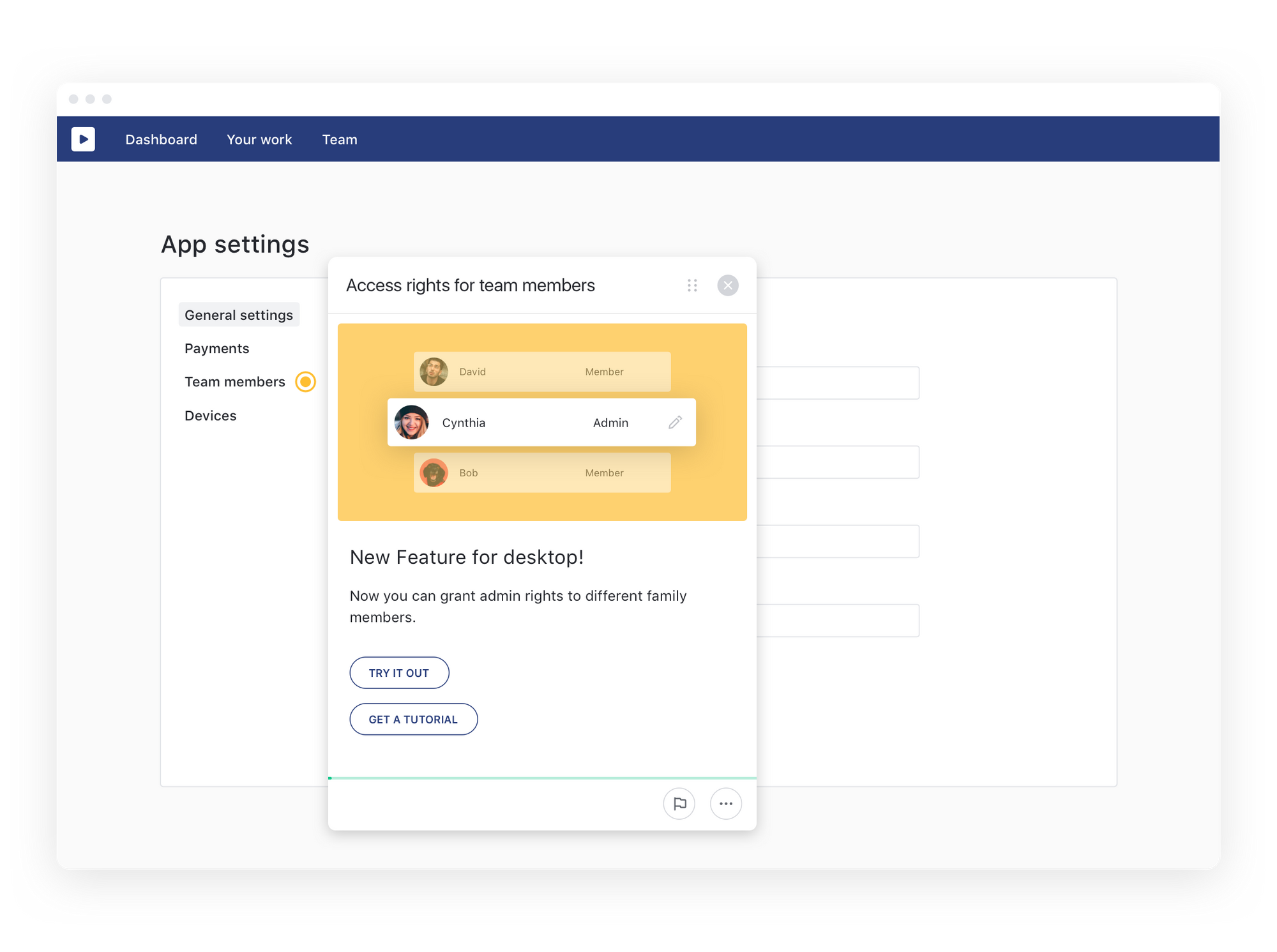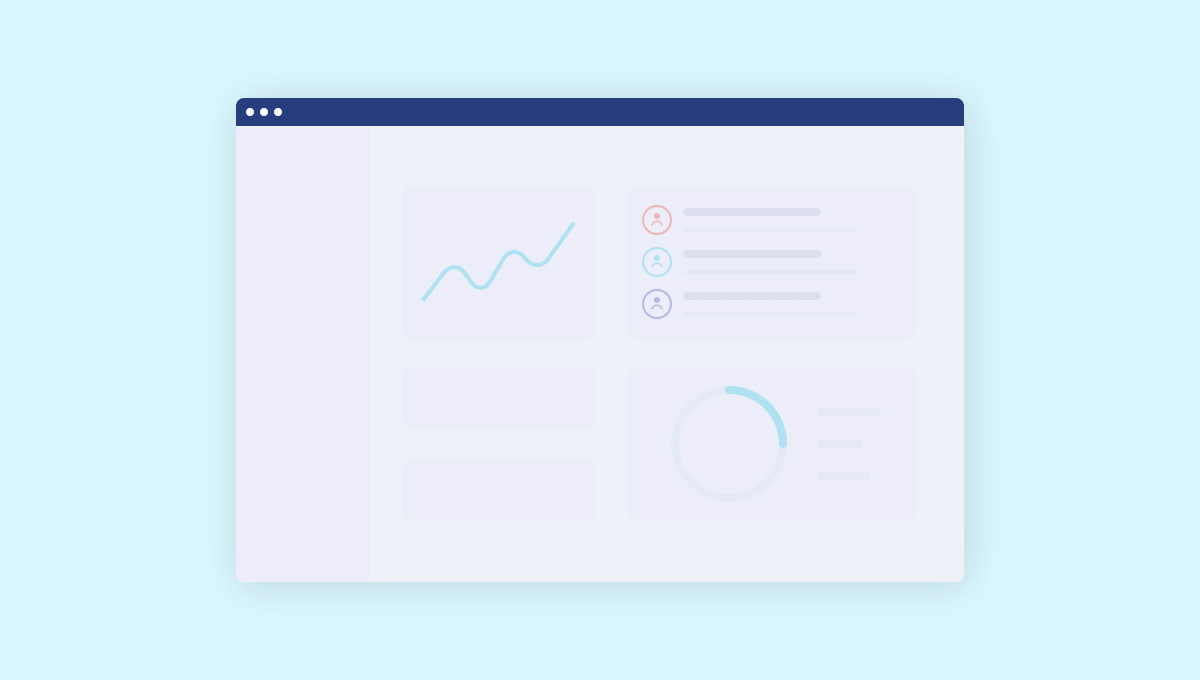Customer success and product adoption go hand-in-hand. Your CSM team is all about enabling customers to succeed with your product. The more successful outcomes your customers achieve with your product, the easier it becomes to retain them and expand their accounts.
Top-performing customer success teams are laser-focused on retention and expansion. There’s a good reason for that: acquiring a new customer is anywhere from 5 to 25 times more expensive than retaining an existing customer.
But it’s very hard—maybe impossible—to retain customers who aren’t actively using your product.
Customers who are “fully engaged” represent an average 23% premium in terms of share of wallet, profitability, revenue, and relationship growth when compared to an average customer, according to Gallup.
Product adoption is a prime indicator of an engaged customer. Here’s how you influence it.
The product adoption process
Product adoption is the process wherein users learn the value of your product and begin using it to accomplish their goals.
Adoption looks slightly different for every product, but it’s vital to your customers’ journey.
Understanding the high-level stages of the customer journey—and where product adoption fits in—can help you be strategic about where your customer success team gets involved and how they influence product adoption.
Here are the typical stages of a customer journey:
- Awareness: A user becomes aware of your product while researching solutions to their problem.
- Conversion: They sign up for a free trial or start a subscription. This is when they move from a prospect to a customer.
- Onboarding: They start to use your product. This stage involves a lot of learning and testing to confirm if your product will meet their needs.
- Retention: They’re paying customers, and they’re using your product. This is the longest period of the customer journey and is typically the ‘default’ stage most customers are in
- Expansion and Advocacy: Assuming your customer is successful, you’ll aim to grow their account. You’ll also harness their positive experience to power more growth through referrals and advocacy.
Product adoption starts the moment a prospect converts to a customer, whether they’re on a free trial or a paid subscription. It continues throughout the retention, expansion, and advocacy stages because the more your customers adopt your product, the more successful they ought to be.
Many people think about product adoption during the onboarding stage, but adoption doesn’t stop with onboarding. While an account might move from the onboarding to retention stage, that account likely contains users at various levels of adoption. Even a tenured account likely contains some users you can influence towards greater product adoption. As your product changes and evolves, you’ll have never-ending opportunities to move users toward increased adoption.
Related Article: 4 Big Wins to Increase Your Customer Success Team’s Impact
Product adoption metrics
There’s no sense in trying to improve product adoption if you can’t measure the impact of your efforts. You can use many metrics to measure product adoption because the right metric depends on your product’s specifics. The most commonly used metrics are:
- Active users: The total users actively using your product within a given timeframe. Every company will have its own definition of “active.”
- Activation: The proportion of customers who perform a key action that allows them to experience the value of your product. Some refer to this as achieving the “Aha!” moment.
- Customer Lifetime Value (CLV): The monetary value of a customer over their entire relationship with your company.
- Feature adoption rate: The proportion of total active users who use a specific feature.
- Time To Value (TTV): The amount of time it takes for a customer to see the value of your product after signing up. You’ll need to define—or work with your customers to understand—when “value” has been achieved.
- Net Promoter Score (NPS): A customer's likelihood of recommending your product to others.
Likely, you’re already working with some of these. As your customer success team zeroes in on driving product adoption, keep an eye on them as measures of success.
You’ll also notice that each of these metrics matches up with different points in the customer journey. For example, CLV focuses on the overall customer value to your organization. On the other hand, TTV and activation focus narrowly on the onboarding stage.
Guide customers through the product adoption lifecycle
There are six key ways customer success teams can drive production adoption:
- Collaborate with product teams
- Capture the right data
- Evaluate how customer actions translate to product adoption
- Maximize the onboarding experience
- Personalize customer communication
- Solicit and share customer feedback
Collaborate with product teams
Close collaboration with your product teams is one of the first things you should establish when hoping to improve product adoption. It’s hard to dramatically improve any aspect of customer experience if you’re focusing on an area that isn’t a priority for your product team.
If you align with your product team’s goals, your efforts will be more effective. Creating a shared understanding of success means that you can build on each others’ work, increasing the likelihood you’ll achieve those goals.
What should that collaboration look like?
That depends on your company’s maturity and what works for you. A few good places to start include:
- Creating shared OKRs
- Establishing a channel for regularly exchanging feedback
- Having customer success managers participate in feature design and user experience
Building healthy relationships with open two-way communication should be the priority, whatever method you use.

Capture the right data
Understanding the customer journey is fundamental for customer success. But you can’t influence product adoption without the correct data. That means a priority should be measuring and tracking the usage of your product and its different features.
Every team member should deeply understand your product features, how customers can make the most of them, what your ideal customer looks like, and what helps them succeed.
The key to understanding the data you need to capture is asking the right questions. Start with these:
Why do people sign up for your product? Is there an “Aha!” moment where they see the value and get hooked? What are common blockers during onboarding, and what are possible workarounds? When do they churn, and why?
Once you understand the answers to these questions, you can use this information while working with customers. You’ll be able to anticipate needs and obstacles. You’ll better position yourself to provide maximum value as early as possible.

Evaluate how customer actions translate to product adoption
Which features of your product are your best customers engaging with? Do you understand how and why they influence product adoption?
Looking at the actions of your best customers helps you understand where to build out your customer success processes. For example, suppose the churn rate is significantly lower among customers that use single sign-on (SSO). In that case, it’s probably a good idea to get as many customers as possible using SSO. You should work SSO into your onboarding checklist and bring it up early in the customer lifecycle. Make it easy for customers to use your stickiest features.

A related approach is to work on understanding why other features aren’t leading to customer success. If it’s due to a lack of awareness—your customers don’t know that feature exists—your success team can improve your customer education. If it’s because customers don’t see the value or need for the feature, you may need to change how you present or sell it (or sunset the feature altogether).
A proactive approach is more powerful than a reactive one:
- Look for ways to provide actionable tips for your customers—in the product, via email, and during calls. Share feature tours, relevant stats, interactive guides, or case studies to help them understand how to use your product better.
- Capture product usage data to identify when a customer gets stuck or doesn’t complete a specific milestone. You can then reach out and try to help them.
Avoid forcing a new feature on your customers. Give them options by first announcing the feature and why they might be interested instead of pushing them right into a tour. Then, ask them what they’d like to do next. Example options could include:
- Tell me more
- Show me how to set it up
- Show me a tour
- Remind me later

Maximize the onboarding experience
Onboarding is your best opportunity to set customers up for success. Designing an onboarding process that’s easy, smooth, and provides maximum value to your customers can drive product adoption like nothing else.
This is your chance to capitalize on the learnings you’ve gathered from the earlier steps. It’s far easier to design the perfect onboarding experience when you’re working closely with your product teams, when you understand the customer journey, and when you know which customer actions drive product adoption.
There are a lot of general onboarding best practices in this customer onboarding framework you could try.
Onboarding is also a great time to use interactive guides tailored to each customer’s needs and where they are in the customer journey. You can figure out the best time to introduce each feature rather than overwhelm new users with everything. You can highlight and celebrate when customers complete certain milestones. You could also use guided tours to educate your customers about the value of different features.

You might also want to investigate options like gamification, checklists, community recognition, or milestone achievement. These could be good ways to incentivize onboarding completion.
Personalize customer communication
Personalization can be so powerful because it meets every customer at the individual level.
Working with customer personas is also a great way to understand what each type of customer needs from your product—and your customer success team—and tailor your message to them. Personas allow you to drill down and focus on one specific target persona, testing to see if you can drive product adoption based on their unique needs.
Pushing features or upgrades at your customers without personalization can lead to blowback. Customers sometimes feel that the feature isn’t valuable, and the product communication is a blatant attempt to upsell.
If you’re very clear about the value proposition of that feature and you only present it to them based on actions they’ve completed, you’re more likely to succeed. In practice, that means:
- Knowing which set of features every customer benefits from the most.
- Defining a set of actions customers need to take in a particular order.
- Unlocking in-product or advertising new features for them based on those actions.
Solicit and share customer feedback
Customer success can drive product adoption by collecting and presenting customer feedback.
Customer success teams often have the best understanding of what prevents customers from engaging. You can solicit feedback from churning customers. You can also reach out to loyal customers and understand what keeps them engaged. Whenever you identify a place where customers commonly get stuck or experience friction, you’ve found an opportunity to help out.
In an ideal scenario, you could even design a clever survey that can act on your customers’ feedback based on how they respond.
These are all great sources of information that you can use to provide actionable insights to your product teams.
Customer success can drive product adoption
Driving product adoption is one of the most meaningful ways customer success can contribute to your business.
Some of the recommendations above make the most of your CSMs’ time with customers. Others are more focused on how to build and automate the processes that support product adoption and customer success with a solution like Stonly. The combination of these elements enables your customer success team to have a massive impact.
Add a customer success layer to your product today. See how by scheduling a Stonly demo.

